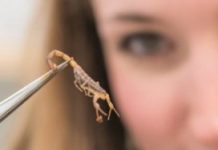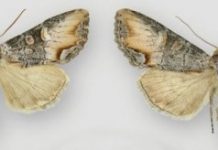Research: Evolutionary ‘arms race’ — how dolphins and whales fight disease threats —
Dolphins, whales and other cetaceans are susceptible to many of the same health hazards as humans including mercury, brevotoxin (e.g. Red Tide), and...
Research: Mystery at the center of the Milky Way solved —
Astronomers from Lund University in Sweden have now found the explanation to a recent mystery at the centre of the Milky Way galaxy:...
Research: Is a simple box and pipe system a solution for farms? —
Spring in America's heartland is often wet. That makes its soil too soft for planting. One solution to that issue is tile drainage....
Research: Researchers update global record of medically significant scorpions —
Scorpions can be found at every corner of the globe and on six of the seven continents, from the southern tip of South...
Research: A step towards biological warfare with insects? —
Owing to present-day armed conflicts, the general public is well aware of the terrifying effects of chemical weapons. Meanwhile, the effects of biological...
Research: Potential assay artefacts in anti-malarial screening documented —
Malaria remains an economic and health burden to the developing world. As plasmodium, the causative agent of malaria, is acquiring rapid resistance against...
Research: Newly discovered moth named Icarus sports a flame-shaped mark and prefers high elevations...
A newly-recognized species of owlet moth recently discovered to inhabit high-elevation mountains in western North America was named after the Greek mythological character...
Research: Polar bears gorged on whales to survive past warm periods; won’t suffice as...
Polar bears likely survived past warm periods in the Arctic, when sea ice cover was low, by scavenging on the carcasses of stranded...
Research: The many structures of the light-active biomolecules —
How the light-sensitive part of the biomolecule phytochrome changes from a light-adapted state to a dark-adapted state has been investigated by researchers at...
Research: Becoming promiscuous to ensure reproduction —
Females of a socially monogamous passerine, the Japanese great tit (Parus minor), become more promiscuous after hatchings fail in the first breeding attempt...
Top News
Hey ISIS, You Suck: Local Muslims Post Anti-ISIS Billboard
A new billboard on Manchester Road in Missouri reads, "HEY ISIS, YOU SUCK!!! From: #ActualMuslims."
A group of Muslim-Americans have put up a blunt billboard...





















